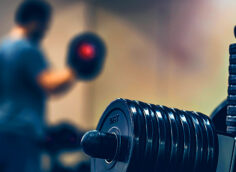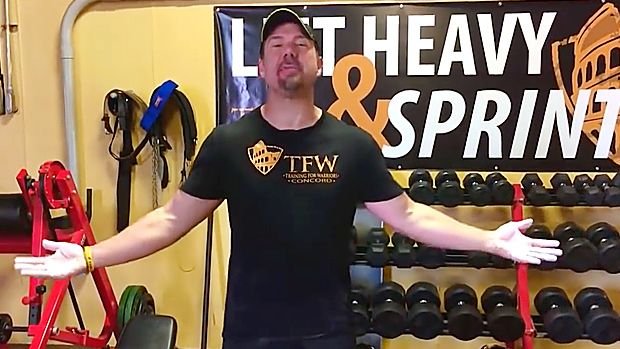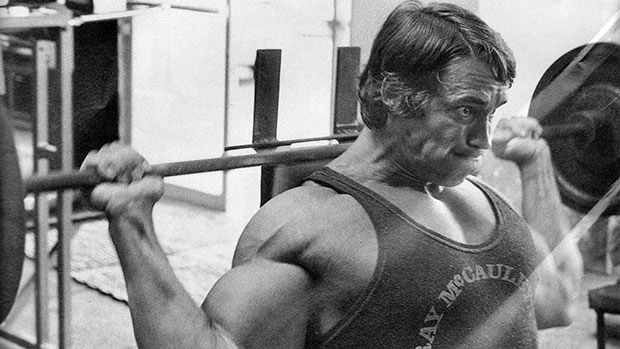If you have a decent training program, you're likely doing some variation of the squat, deadlift, overhead press, and pull-up or row. What's missing? The exercises that help you become more proficient at these lifts.
Here are four exercise that'll increase your mobility, improve your balance, and strengthen your underused muscles.
How To Do It
- Get in a wide stance with your toes pointed out and heels planted firmly into the ground.
- Hold a dumbbell at crotch height and squeeze your shoulder blades tightly together to establish a strong, flat back.
- As you squat down, drive your knees out and back. At no point should your knees roll forward, nor should there be any space between your crotch and the dumbbell.
- Come to a full pause at the bottom and focus on the stretch through the inner thigh.
- Maintain tightness as you straighten your knees and come back to a standing position.
Why You Need It
The sumo plié squat is an excellent way to gain mobility in your squat and train your glutes and adductors to fire simultaneously.
The relationship between the adductors (inner thigh muscles) and glutes play a huge role in stabilizing the knee when squatting. Your adductors pull your leg in toward the body and your glutes are responsible for hip extension, abduction, and external rotation.
When your adductors are overly tight or weak and your glutes aren't firing properly, your knees will cave in under a heavy load. This generally happens when these muscle groups aren't in sync and you have improper timing when recruiting the glutes or adductors.
How To Do It
- Start with both feet together and shoulder blades tightly squeezed.
- Hinge at the hips by bringing one leg back. This should be the leg on the same side as the arm that's holding the weight.
- Maintain a neutral head position by keeping your chin tucked and focusing on a spot on the floor about a foot away from your grounded leg.
- Stop the movement when your hand is even with the knee of your grounded leg.
- Use your glutes to drive your hips forward and come back to a standing position. At no point should there be any rounding in your lower back.
Why You Need It
This will help prevent your hips from shifting during the deadlift, which is common. Most of us have one leg that's stronger than the other, so compensation will naturally occur under a heavy load. If you're not sure what this hip shifting this looks like, here it is:
To avoid a hip shift, strengthen your hinge pattern unilaterally to reduce muscular imbalances. The one-arm, one-leg RDL not only strengthens your glutes, hamstrings, and spinal erectors, but also improves pelvic stability and balance.
How To Do It
- Begin on all fours with your legs straight, hips elevated, and palms slightly turned in.
- Bend at the elbows and lower your head down toward the floor as you keep your hips high.
- Once the top of your head reaches the floor, "scrape" your nose along the ground and continue moving forward.
- Pause when you feel yourself about to fall forward.
- Drive back to the starting position by keeping your nose right next to the floor for as long as possible. The goal is to drive yourself directly backward creating upward rotation through your shoulder blades.
- For shoulder health, drive your elbows out when lowering and tuck them in towards the body as you become more parallel with the ground.
Why You Need It
It'll help your overhead press. The overhead press requires lots of mobility through the thoracic spine to get the bar into a proper finishing position.
You drive the bar up and backward, then fully lock out the elbows with the bar above the head. Many people can't get into this position because they lack the mobility or kinesthetic awareness to create upward rotation and elevation of their shoulder blades.
The pike push-up addresses a lack of mobility because you have to press yourself back toward your legs to complete a rep. This forces your shoulder blades to upwardly rotate and elevate when completing the press.
How To Do It
- Set a bar up a little above waist height. Hold it using an underhand grip and position your body at about a 45-degree angle in relation to the bar.
- Use a supinated grip (palms up) so that your elbows are forced into your sides when pulling.
- Pull yourself up towards the bar so that your upper abdomen/ribcage comes into contact with it.
- Lower yourself down slowly, focusing on maintaining tightness through your core.
Why You Need It
The mid-back is often neglected during pulling exercises. Too often, people overuse their upper traps when rowing or their biceps when doing chin-ups. This decreases the amount of strength they could actually get out of their lower traps, rhomboids, and lats.
To get your back to grow, you need to make the line of pull easier and work your muscles from a different angle. The 45-degree inverted row allows you to focus on squeezing your mid-back, which is necessary if you want to get good at chin-ups and rows.





